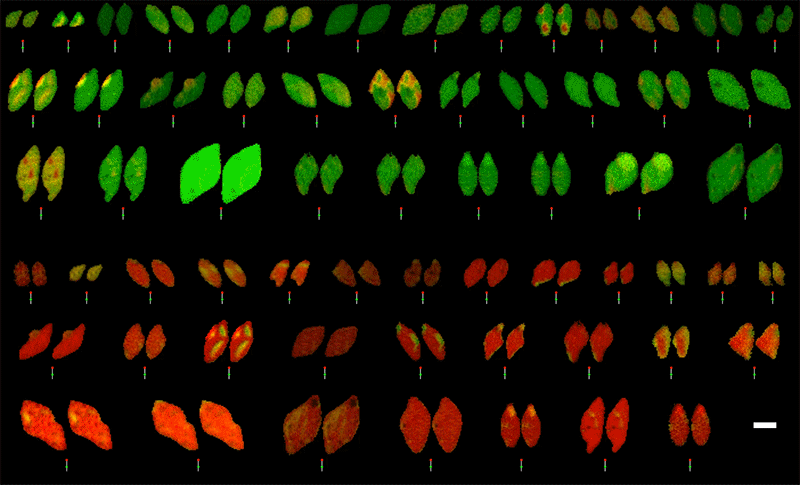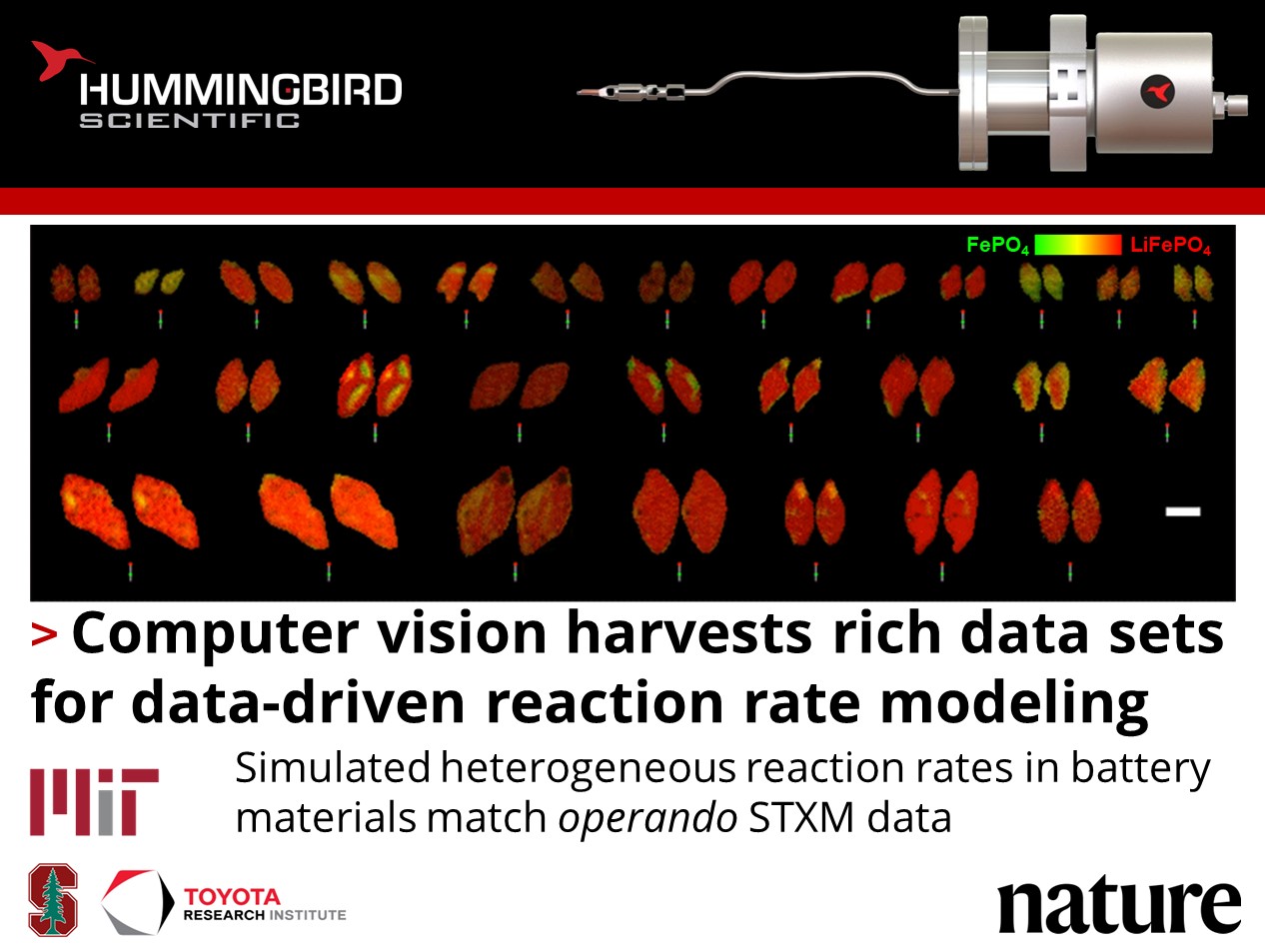How can machine learning improve battery efficiency and stability?
Hongbo Zhao, Will Chueh, Martin Bazant, and their colleagues at the Massachusetts Institute of Technology, Stanford University, and the Toyota Research Institute conducted in-situ scanning transmission X-ray microscopy (STXM) using their Hummingbird Scientific in-situ X-ray bulk liquid electrochemistry sample holder to study heterogeneous reaction kinetics in lithium iron phosphate (LFP) nanoparticles. The work combined a large data set of X-ray chemical mappings with computer vision to develop a data-driven model for heterogeneous reaction kinetics.


X-ray chemical maps of LiFePO4 nanoparticles during charging and discharging. Experimental STXM (left) and simulated results (right) show remarkable agreement. Scale bar 1 μm. Copyright © 2023 Springer Nature Limited
The method involved formulating and solving an inverse problem to infer critical properties like the free energy landscape and spatially-resolved surface reaction rates directly from the images. The resulting multidimensional model achieved remarkable accuracy in replicating the experimental data, with pixel-level discrepancies comparable to experimental noise (<7%). The model supported the coupled ion-electron transfer mechanism governing lithium intercalation in LFP, while also correlating local variations in reaction rate to the carbon coating thickness on individual particles. This integrated and data-driven approach is critical for improving the efficiency of battery and electrocatalyst materials where spatially heterogeneous and unstable interfaces govern complex reaction kinetics, and is enabled by the Hummingbird Scientific liquid cell.
Reference: Hongbo Zhao, Haito Dean Deng, Alexander E. Cohen, Jongwoo Lim, Yiyang Li, Dimitrios Fraggedakis, Benben Jiang, Brian D. Storey, William C. Chueh, Richard D. Braatz, Martin Z. Bazant Nature 621 289–294 (2023) DOI: 10.1038/s41586-023-06393-x
Full paper Copyright © 2023 Springer Nature Limited
View All News

